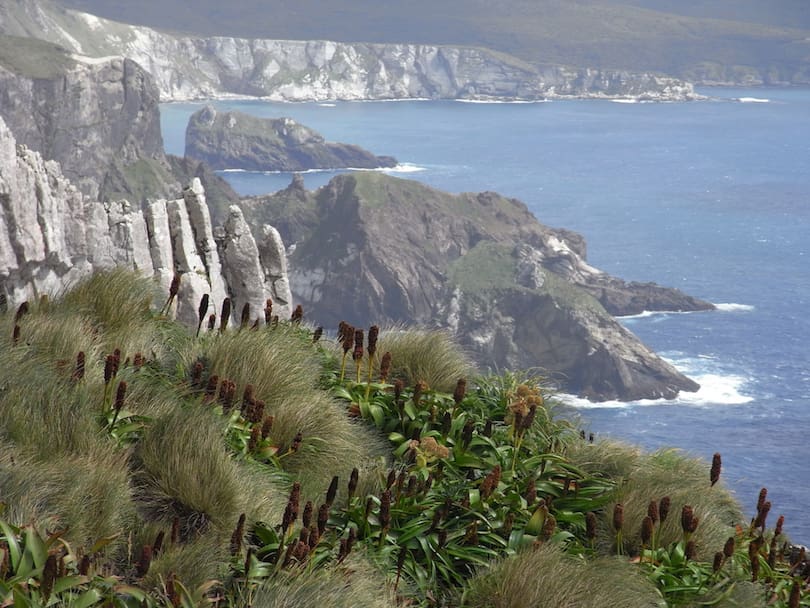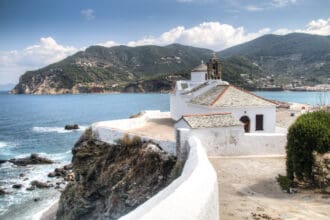Discover the top 10 largest lakes in the world, from the awe-inspiring depths of the Caspian Sea to the stunning beauty of Lake Superior. Dive into the geographical wonders that hold a significant place in the world’s aquatic landscape.
Introduction: Embracing the Magnitude of Nature’s Aquatic Marvels
The world is adorned with breathtaking natural wonders, and among them, the vast lakes hold a special place. These bodies of water exhibit nature’s grandeur and diversity, providing not only a source of sustenance but also countless recreational opportunities. In this comprehensive article, we will embark on a journey to explore the ten largest lakes in the world, each with its unique charm and significance. So, fasten your seatbelts, as we dive into the depths of these awe-inspiring aquatic marvels.
Lake Superior: The Majestic Giant of North America
Lake Superior stands tall as the largest lake in the world by surface area, captivating all those who lay their eyes on its immense splendor. Spanning approximately 31,700 square miles, this magnificent freshwater reservoir borders the United States and Canada, nestled amid the stunning landscapes of the North American continent. The lake’s crystal-clear waters not only offer picturesque views but also serve as a haven for numerous species of flora and fauna, making it a paradise for nature enthusiasts and researchers alike.
Lake Superior is not just a treat for the eyes; it also boasts a rich cultural and historical heritage. Indigenous communities, explorers, and settlers have long cherished the resources and beauty this lake has to offer. Today, it continues to attract visitors with its recreational activities, including fishing, boating, and hiking along its scenic shores.
Caspian Sea: The Enigmatic Transcontinental Lake
Contrary to its name, the Caspian Sea is technically the world’s largest lake, making it a unique and intriguing geographical wonder. Stretching across an astounding 143,000 square miles, this vast water body spans both Eastern Europe and Western Asia. Its fascinating blend of freshwater and saltwater, along with its connection to numerous rivers, adds to its mystique.
The Caspian Sea serves as a critical ecological habitat and a vital transportation route, supporting diverse aquatic life and enabling trade and commerce between surrounding countries. Beyond its practical importance, this awe-inspiring lake is steeped in history, with tales of ancient civilizations thriving along its shores. Today, the Caspian Sea remains a vital resource for the countries that share its waters, reflecting its undeniable significance.
Lake Baikal: The Jewel of Siberia
Nestled deep within the heart of Siberia, Lake Baikal reigns as the world’s deepest and oldest freshwater lake, captivating all who venture to its shores. With a staggering depth of approximately 5,387 feet, this lake holds around 20% of the world’s unfrozen freshwater reserve. Its astonishing clarity allows visibility down to depths that seem almost surreal.
Lake Baikal is not only a natural wonder but also a UNESCO World Heritage Site, owing to its unique biodiversity. It is home to thousands of plant and animal species, with many of them found nowhere else on Earth. The famous Baikal seal, or nerpa, is among its most well-known inhabitants. The lake’s breathtaking beauty and ecological importance make it a must-visit destination for ecotourists and nature enthusiasts.
The Great Lakes: A Majestic Collective Wonder
The Great Lakes of North America, a group of five interconnected freshwater lakes, form the largest lake system by surface area in the world. These lakes, namely Lake Michigan, Lake Huron, Lake Erie, Lake Ontario, and Lake Superior, hold a combined surface area of approximately 94,600 square miles, offering a vast expanse of water wonder.
The Great Lakes play a crucial role in the region’s geography, climate, and economy. They serve as essential sources of drinking water, irrigation, and transportation, supporting a thriving ecosystem of flora and fauna. The lakes’ scenic beauty and recreational opportunities attract visitors year-round, providing ample opportunities for boating, fishing, and water sports.
Lake Tanganyika: A Rift Valley Gem
Nestled within the Great Rift Valley of Africa, Lake Tanganyika stands out as the second deepest lake in the world, boasting depths of about 4,823 feet. This ancient lake’s age is estimated to be around 9-12 million years, making it one of the oldest and most fascinating bodies of water on the planet.
Lake Tanganyika serves as a vital resource for the surrounding communities, providing sustenance and livelihoods for millions of people. Its waters are home to an incredibly diverse array of aquatic species, many of which are found nowhere else in the world. This biological richness has earned it the recognition of being a biodiversity hotspot.
Lake Michigan: The Pristine Gem of North America
Lake Michigan, one of the five Great Lakes of North America, enchants visitors with its pristine beauty and recreational allure. Covering a surface area of approximately 22,400 square miles, it ranks as the second-largest of the Great Lakes and the third-largest freshwater lake by surface area in the world.
The lake’s sandy beaches, clear waters, and picturesque shoreline attract millions of visitors each year. From bustling waterfront cities to serene natural habitats, Lake Michigan offers a diverse range of experiences for everyone to enjoy. Whether it’s swimming, sailing, or simply basking in the beauty of a sunset over the lake, there’s something for every traveler along its shores.
Lake Malawi: The Warm Heart of Africa
Nestled in the eastern part of the African continent, Lake Malawi is a dazzling freshwater lake renowned for its warmth, both in water temperature and in the hearts of its people. With a surface area of approximately 11,400 square miles, Lake Malawi is the ninth-largest lake in the world and the third-largest in Africa.
The lake’s exceptional clarity and vibrant aquatic life make it a paradise for snorkelers and scuba divers. Its waters are teeming with an astonishing array of colorful fish species, many of which belong to the family of cichlids. Beyond its ecological significance, Lake Malawi serves as a vital resource for the communities living along its shores, providing sustenance and supporting local economies.
The Aral Sea: A Tragic Tale of Decline and Restoration
Once one of the four largest lakes in the world, the Aral Sea now stands as a tragic example of environmental degradation and human impact on natural ecosystems. Situated in Central Asia, the Aral Sea has dramatically shrunk over the years due to excessive water diversion for irrigation purposes.
The consequences of this ecological disaster have been severe, with the sea’s water levels dropping drastically, leaving behind vast stretches of dried-up seabed and ecological devastation. However, efforts are underway to restore the Aral Sea’s former glory, and positive changes have been observed in recent times.
Lake Victoria: Africa’s Largest Tropical Lake
Lake Victoria, situated in East Africa, holds the title of being the largest tropical lake in the world by both surface area and volume. Covering approximately 26,600 square miles, this freshwater lake is shared by three countries: Kenya, Uganda, and Tanzania.
Lake Victoria plays a significant role in the lives of millions of people living around its shores, providing valuable resources for fishing, transportation, and agriculture. The lake’s ecological balance is essential to the region’s biodiversity and the livelihoods of its inhabitants.
Lake Huron: A Treasure of the Great Lakes
Lake Huron, another gem in the crown of the Great Lakes, offers a diverse range of attractions and natural wonders for visitors to explore. With a surface area of around 23,000 square miles, it ranks as the second-largest among the Great Lakes and the fifth-largest freshwater lake in the world.
The lake’s rugged shoreline, dotted with stunning cliffs and sandy beaches, creates a picturesque landscape that beckons travelers from near and far. From historic lighthouses to vibrant coastal towns, Lake Huron’s shores are brimming with stories and adventures waiting to be uncovered.
Frequently Asked Questions (FAQs):
Q: Which is the largest lake in the world by surface area?
A: The largest lake in the world by surface area is Lake Superior, spanning approximately 31,700 square miles.
Q: What makes Lake Baikal unique?
A: Lake Baikal is unique for several reasons: it is the world’s deepest and oldest freshwater lake, holding around 20% of the unfrozen freshwater on the planet. Its stunning clarity and unparalleled biodiversity also set it apart from other lakes.
Q: How are the Great Lakes interconnected?
A: The Great Lakes—Lake Michigan, Lake Huron, Lake Erie, Lake Ontario, and Lake Superior—are interconnected through various straits and channels, allowing water to flow between them.
Q: What is the significance of Lake Tanganyika?
A: Lake Tanganyika holds immense significance as one of the oldest and deepest lakes in the world. Its waters are home to a diverse range of unique aquatic species, making it a vital ecological hotspot.
Q: What is the current state of the Aral Sea?
A: The Aral Sea has faced severe ecological decline due to excessive water diversion, leading to shrinking water levels and ecological devastation. However, restoration efforts are underway to revive the sea’s ecosystem.
Q: How does Lake Malawi support local communities?
A: Lake Malawi provides sustenance and livelihoods for the communities living along its shores through fishing and supporting local economies.
Conclusion: Celebrating the Wonder of Earth’s Largest Lakes
As we conclude our journey through the ten largest lakes in the world, we are left in awe of the sheer magnitude and beauty that nature has bestowed upon us. From the vast expanse of Lake Superior to the ecological wonders of Lake Baikal and the vibrant life in Lake Malawi, each of these lakes tells a unique story that has shaped the lives of countless people and species.
As we continue to cherish and protect these natural wonders, let us remember the significance they hold in the grand tapestry of our planet’s biodiversity. Whether it’s for research, recreation, or simply appreciating the wonders of our world, these lakes invite us to explore and connect with nature in all its splendor.






